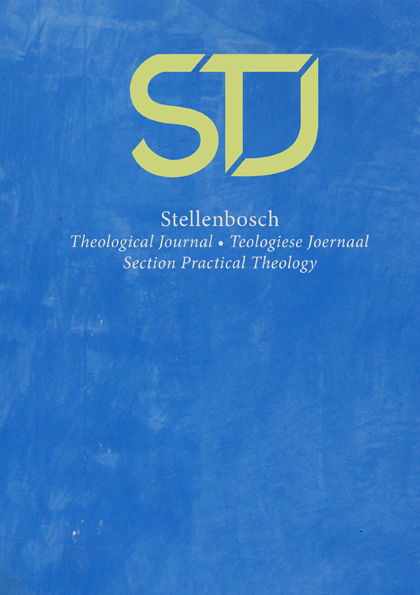Pandemic homiletics?
A South African exploration of preaching during the time of the Covid-19 crisis
DOI:
https://doi.org/10.17570/stj.2021.v7n2.a7Abstract
The Covid-19 pandemic confronted the world and South Africans with the challenges of health care and "Zoomification". From the 29th of March 2020 it was, because of the restriction and ban on gatherings, expected from ministers and faith leaders in South Africa to use online technology to preach their sermons. Many preachers had to rethink the format and content of their preaching. The question arose as to what sermons may look like during these times, and specifically the content and God images of the sermons. This chapter examines the sermon content of a purposive sample of ministers from the combined Stellenbosch circuit of the Dutch Reformed Church and the Uniting Reformed Church in Southern Africa. Twenty-four sermons were analysed, making use of a combination of the Heidelberg method of sermon analysis and grounded theory in order to identify the core themes of their preaching and the God images used at the start of the Covid-19 pandemic. Based on the sermons, the researcher asked three questions: Which texts did the preachers choose? What themes emerged from the sermons? With which God images did the preachers work? Using ATLAS.ti, the sermons were coded, topics were identified, and God images were discerned.
When I began writing these lines
it was not, to be sure, inspiration but desperation,
to be alive, to believe again in the love of God.
The love of God is not a thing one comprehends
but that by which "and only by which”one is comprehended.
It is like the child's time of pre-reflective being,
and like that time, we learn from its lack.
Christian Wiman, Survival is a Style
Published
How to Cite
Issue
Section
License
Copyright (c) 2022 Ian Nell

This work is licensed under a Creative Commons Attribution 4.0 International License.
https://creativecommons.org/licenses/by/4.0/
Authors who publish with this journal agree to the following terms:
Authors retain copyright and grant the journal right of first publication with the work simultaneously licensed under a Creative Commons Attribution License that allows others to share the work with an acknowledgement of the work's authorship and initial publication in this journal.
Authors are able to enter into separate, additional contractual arrangements for the non-exclusive distribution of the journal's published version of the work (e.g., post it to an institutional repository or publish it in a book), with an acknowledgement of its initial publication in this journal.
Authors are permitted and encouraged to post their work online (e.g., in institutional repositories or on their website) prior to and during the submission process, as it can lead to productive exchanges, as well as earlier and greater citation of published work.
Please note that erroneous copyright information is given in the PDFs before Volume 9, 2023.



